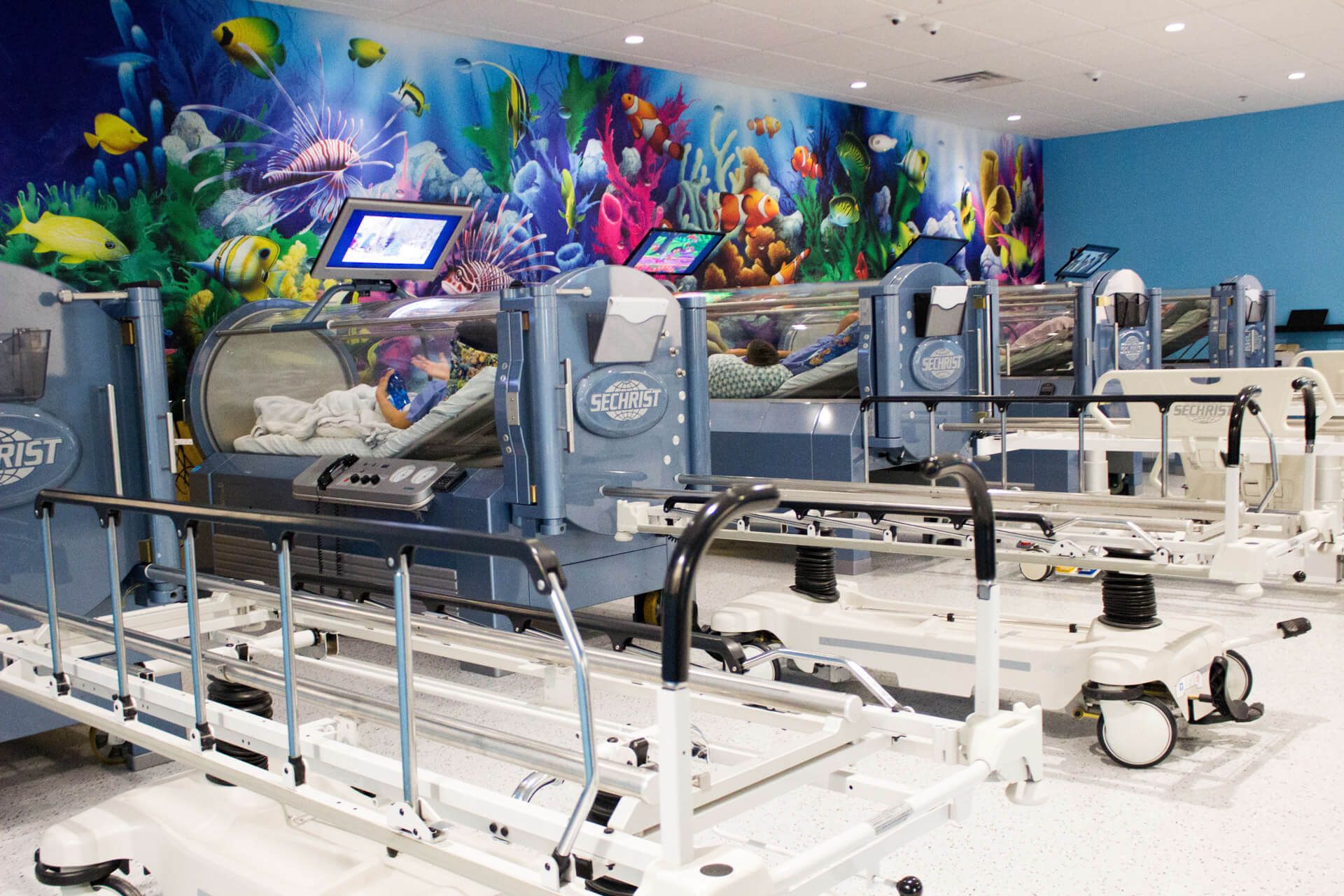How Does Hyperbaric Oxygen Therapy Help Stroke Recovery
Hyperbaric Oxygen Therapy (HBOT) is the administration of 100% pure oxygen under greater than normal atmospheric pressure. Although it has only recently gained widespread attention in the United States, HBOT has been used for over 100 years. While it was originally developed for the bends, a diving injury caused by air bubbles in the bloodstream, HBOT’s numerous healing effects have since been recognized. HBOT aids in recovery from so many conditions that it has been described as “a therapy in search of diseases.” By pushing higher levels of oxygen deeper into the body’s systems, HBOT has successfully given life back to a wide variety of patients.
Generally speaking, strokes can be classified as either ischemic or hemorrhagic. Approximately 80% of all strokes are ischemic (Grysiewicz et al., 2008). Current studies have shown that both hemorrhage within the brain and primary ischemia can cause a lack of oxygenation and nutritional supply and a series of neurochemical events that lead to spreading brain damage.1 This inhibits nutrients and blood supply from reaching the damaged parts of the brain and has traditionally made healing limited, if not impossible.
How does Hyperbaric Oxygen Therapy improve patients’ healing? HBOT increases the dissolved oxygen levels in plasma and can even nourish tissues in the absence of red blood cells.2 HBOT also promotes capillary development throughout the body. These changes bring more oxygen and nutrients to cells in need of healing. Hyperbarics solves one of the root dilemmas of stroke recovery by improving nutrient and oxygen circulation to damaged tissues. This allows patients to focus their efforts on training the body to adapt to its rehabilitated function through programs such as neuro physical therapy and neurofeedback.
Hyperbaric Oxygen Therapy can give stroke patients back their lives by improving strength, endurance, balance, coordination, motor skill, verbal skill, and memory recall. These improvements can provide the patient a greater level of independence than before. Additional benefits of HBOT in stroke patients include: improved oxygenation, reduced intracranial pressure, improved metabolic rate of cerebral tissue, and inhibited post-stroke cell apoptosis and necrosis.
If a stroke has left you or a loved one debilitated with a loss of fine motor skills, inability to walk, or brain imbalance, let Oxford Recovery Center conduct a FREE evaluation of your disorders in order to develop a customized recovery plan. Oxford Recovery Center Integrates Hyperbaric Oxygen Therapy in conjunction with Neuro Physical / Suit Therapies and Neurofeedback Programs to accelerate the development of new motor skills that strengthen muscles and teach the brain and body how to sit, stand and walk again. Call The Oxford Center today at 248-486-3636 to schedule an appointment at their Brighton or Troy, Michigan locations. To learn more about Oxford’s integrative therapy approach for a myriad of physical and neurological disorders visit www.OxfordRecoveryCenter.com. Let your healing begin!
- Zhai, Wei-Wei et al. “Hyperbaric Oxygen Therapy in Experimental and Clinical Stroke.” Medical Gas Research 6.2 (2016): 111–118. PMC. Web. 15 June 2017.
- Lim, J., W K. Lim, T T. Weo, Y Y. Sitoh, and E. Low. “Management of HemorrhageStroke with Hyperbaric Oxygen Therapy.” Singapore Med J, vol. 42, no. 5, 15 June 2001, 220-23.
